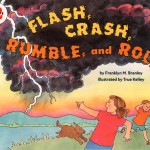
Readers & Thinkers: The 2004 Nobel Prize in Economics. Post Analysis
Posted by ludw1086 on Sep 7, 2012 in Readers & Thinkers | Comments Off on Readers & Thinkers: The 2004 Nobel Prize in Economics. Post AnalysisDear All:
The Nobel prize for economic sciences for 2004 was announced today. It went to
Ed Prescott and Finn Kydland. I had guessed Prescott for my second choice. This is
6 out of 7 years that either my 1st or 2nd choice has won the Nobel…it’s good to be lucky sometimes.
I didn’t name Kydland, but he was the natural choice to go with Prescott, however, I thought it would be Prescott and someone else, rather than Kydland.
So what did these guys do to be so Noble?
In a nutshell, these guys contributed to the theory of business cycles. And given that we’ve seen such a wave in that cycle over the last few years, it wasn’t a surprise who received the Nobel.
The committee released this statement: “for their contributions to dynamic macroeconomics: the time consistency of economic policy and the driving forces behind business cycles”.
They built models of the business cycle that attempted to theoretically predict the actual behavior of GDP growth, employment, inflation, etc. Many researchers followed in their footsteps by examining these “real business cycle models” to see how well they predicted reality and what could be learned from them. In fact, as a young man ;), I worked for Prof. Julio Rotemberg of Harvard and Michael Woodford of Chicago building programs that simulated a real business cycle model with certain growth possibilities. The paper was published in the AER and entitled “Real Business Cycle Models and Forecastable Movements in Output, Hours, and Consumption.”
The two men also added the possibility of supply-side shocks to their models. This helped explain the phenomena of the 1970s, like STAGFLATION. Until that point, much of the research believed output fluctuations were due to demand-side shocks (e.g. consumers not buying anymore or changing their tastes). These new models incorporated shocks to productivity and input prices.
Rather than just study the macroeconomic data, the two men built models based upon microeconomic foundations, and simulated what would occur in the economy. They then compared this to reality to determine if these models built from the ground-up could explain the macroeconomy. These models also became useful for forecasting, since you could easily change one of the inputs and produce a new result. For example, you could ask, what will happen to GDP growth if oil prices increase by 20 %.
Kydland and Prescott also made strides into incorporating the “time consistency” problem into their macroeconomic models. This idea had a strong impact on future macroeconomists doing research in the field. It also is important for developing countries, like Latin America where the issue is very much of a concern. “Time Consistency” is a term in economics to describe the idea that a decision you make today, must be consistent with what you would choose at some point the future. For example, if the wolf in little red riding hood promises you that if you let him run loose in your yard, he won’t eat any of the sheep. Well, at the current time, it’s probably a good statement to get you to let him loose, but once he’s out in the yard, it’s very unlikely that he will keep to his word at that point in time.
Another more realistic example of the “time consistency” problem has to do with monetary authorities or governments regarding inflation and unemployment. Suppose you are the government of a high inflation country.
At time t, you say “We will keep inflation low and not produce money.” But then as time passes, unemployment
Is quite high and the government would be strongly tempted to expand the money supply and reduce unemployment and in the process generate a little inflation. Thus, the statement is “time inconsistent.” In fact, it’s worse than you think, because the workers in the country will realize this and demand high wages now to offset the future inflation, which will just lead to a feedback effect causing higher and higher inflation. Time inconsistency
can be a real debacle.
The issue of “time consistency” arises everywhere, even in taxes. For instance, one president can cut taxes, but another president could come in and roll-back the tax cuts, thus removing them.
The researchers proposed that monetary policies could be conducted with long-term RULES by independent monetary authorities, that would be difficult to change, such as constant money growth. These rules would help counteract the problem of time inconsistency. The downside to these rules, is that the governments “hands are tied” if something really bad happens, like a supply-side shock. These rules have been effective to this day.
For more information on these winners:
http://nobelprize.org/economics/laureates/2004/public.html
Enjoy!
Ludwig






